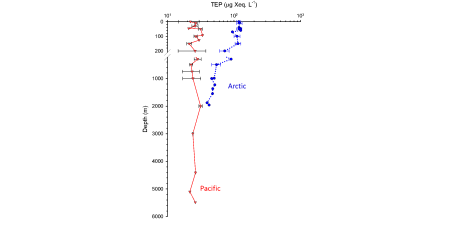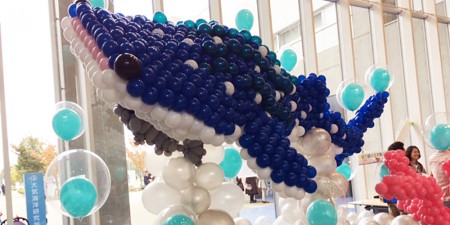Transparent exopolymer particles (TEP) in the deep ocean: full-depth distribution patterns and contribution to the organic carbon pool
Transparent exopolymer particles (TEP) produced by phytoplankton and bacteria are abundant in seawater. They play important roles in carbon cycle and food webs in the ocean. Although, in previous studies, TEP distribution have investigated in the shallow layers (up to ca. 200 m), the distribution have little investigated in the deep ocean, which humper the understanding of carbon cycle and food webs in marine environments. In this study, we investigated the full-depth distribution of TEP concentration in western Arctic and central Pacific. We also consider the contribution of TEP-carbon to the organic carbon pool in the deep ocean.
In the Arctic Ocean, TEP concentrations decreased with depth. In contrast, in the Pacific Ocean, TEP were distributed uniformly with depth. TEP-carbon exceeded that of particulate organic carbon in deep ocean (200-1000 m: TEP-carbon was 2−3 times higher than the concentrations of POC, 1000-4000 m: TEP-carbon was 6 times higher than the concentrations of POC). Our results suggest that TEP are a dynamic and large component of the organic carbon pool in the ocean interior, influenced by vertical transport, in situ prokaryotic production. Future studies should examine the method of TEP-carbon analysis and measure the distribution in other geographic sites.
Mean TEP vertical concentrations in Arctic and Pacific Ocean. In Arctic, TEP concentration decreases increasing the depth. In Pacific, TEP concentration is relatively uniform throughout the water column.


